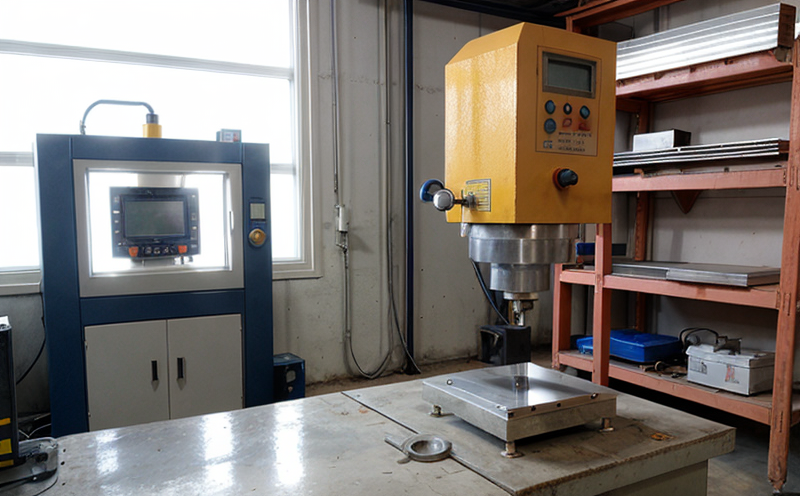Dimensional measurement inspection
Dimensional measurement inspection is a critical process in ensuring that products meet precise specifications and quality standards. This service involves using precision tools and techniques to measure various dimensions of components, assemblies, or finished goods. The accuracy of these measurements directly impacts the functionality, safety, and overall performance of the product.
Third-party surveillance and product quality inspection services play a pivotal role in this process by providing independent verification that products conform to predefined specifications. This is particularly important in sectors like automotive, aerospace, electronics, and manufacturing where precision and reliability are paramount. The dimensional measurement service ensures consistency across production batches, identifying any deviations from the design requirements early on.
The primary tools used in this inspection include micrometers, calipers, gages, and coordinate measuring machines (CMMs). These instruments provide accurate readings that can be compared against the nominal dimensions specified by the manufacturer. The process begins with careful preparation of the samples to ensure they are free from any external factors that could affect the measurements.
Once the samples are prepared, the inspection process involves several key steps:
- Sampling Preparation: Ensuring that the specimens are clean and in a stable condition for measurement.
- Instrument Calibration: Guaranteeing that all measuring devices are accurate and within specified tolerances.
- Data Collection: Taking precise measurements using calibrated instruments.
- Data Analysis: Comparing the collected data against the design specifications to identify any discrepancies.
The dimensional measurement inspection service adheres to international standards such as ISO 9001 for quality management systems, ISO 17025 for testing and calibration laboratories, ASTM E83-18 for precision of micrometers, and EN 45001 for conformity assessment.
The results of this inspection are crucial for maintaining product integrity. Any deviations from the specified dimensions can lead to operational issues or safety hazards. By identifying these issues early in the production process, corrective actions can be taken to prevent costly rework or recalls. This not only enhances customer satisfaction but also ensures compliance with regulatory requirements.
Furthermore, dimensional measurement inspection is vital for R&D departments as it provides insights into product performance and potential improvements. It allows manufacturers to refine their processes and designs, leading to higher-quality products that meet market demands. In the procurement phase, this service ensures that purchased components are up to standard, reducing the risk of supply chain disruptions due to substandard materials.
Applied Standards
The dimensional measurement inspection adheres to a range of international standards to ensure accuracy and reliability. These include:
- ISO 9001: Quality management systems for the manufacturing sector.
- ISO 17025: General requirements for the competence of testing and calibration laboratories.
- ASTM E83-18: Precision of micrometers used in dimensional measurement.
- EN 45001: Conformity assessment.
The use of these standards ensures that the inspection process is consistent and repeatable, providing confidence in the results. Compliance with these standards also facilitates seamless integration into global supply chains, ensuring that products meet international quality benchmarks.
Benefits
The benefits of dimensional measurement inspection are multifaceted, encompassing both internal and external advantages for businesses:
- Enhanced Product Quality: Ensuring that products meet the highest standards, reducing defects and rework.
- Improved Customer Satisfaction: Delivering products that consistently meet customer expectations, thereby fostering long-term relationships.
- Compliance with Regulations: Meeting industry-specific regulations and ensuring product safety.
- Prompt Identification of Issues: Early detection of discrepancies allows for timely corrective actions, minimizing financial losses due to recalls or rework.
- Informed Decision-Making: Providing R&D teams with accurate data to refine designs and processes.
By incorporating dimensional measurement inspection into their quality control protocols, businesses can achieve higher levels of efficiency, reliability, and customer trust. This not only enhances the brand image but also contributes to sustainable growth and competitive advantage in the market.
Customer Impact and Satisfaction
- Increased Efficiency: By catching issues early, the service helps streamline production processes, reducing downtime and associated costs.
- Better Product Quality: Ensuring that products meet exact specifications enhances customer satisfaction and loyalty.
- Reduced Rework Costs: Early detection of defects minimizes the need for costly rework or replacement of components.
- Improved Reputation: Consistently delivering high-quality products builds a positive reputation among customers and industry peers.





